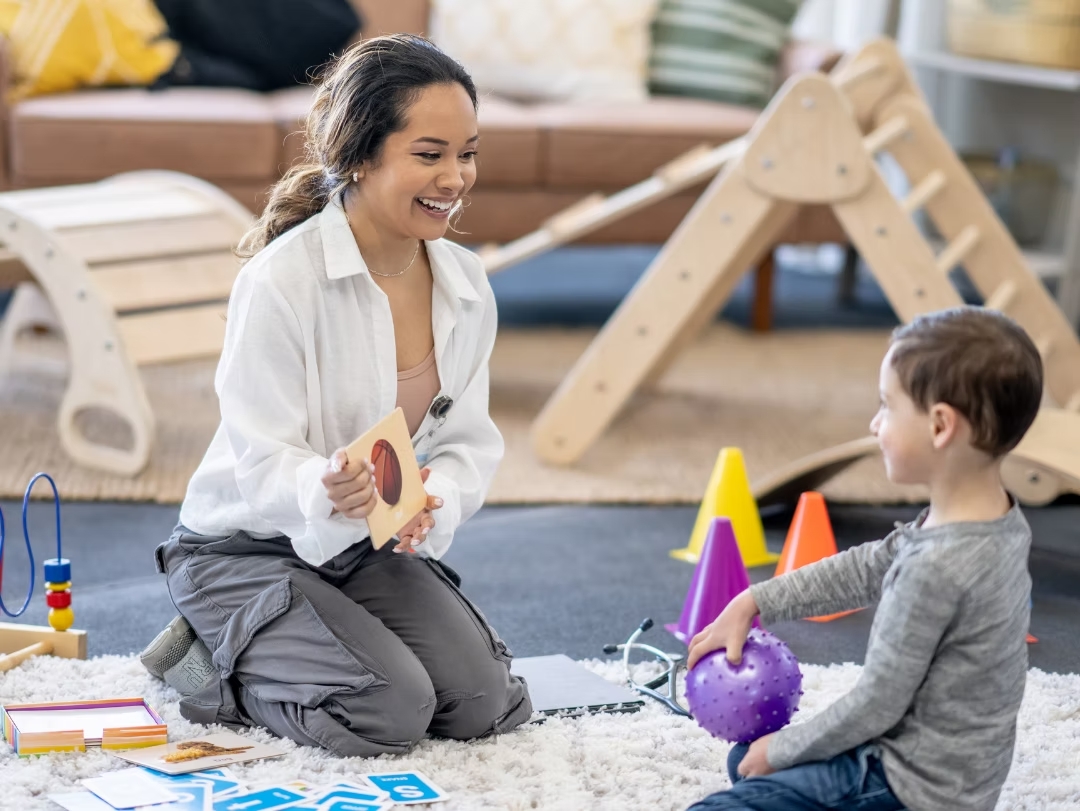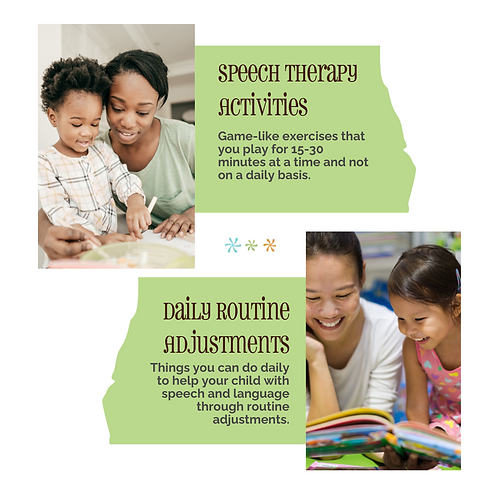
As speech therapists, we love it when parents ask for additional ways they can support and enhance the work we do in session while at home. We understand the challenges you face with your child’s receptive and expressive language skills. While there is no “quick fix” for speech and language difficulties, integrating speech therapy exercises into your daily routine can be a powerful way to assist your child outside of formal therapy sessions. We put together a list of 12 at-home speech therapy exercises designed to be both engaging and beneficial for your child.
Speech Therapy Activities vs Daily Routine Adjustments
Before we dive into those therapy exercises, we thought it might be a great idea to give some insight into the different ways you can help your child communicate better. These are split into two categories: Speech Therapy Activities and Daily Routine Adjustments.
-
Utilize the Picture Exchange Communication System (PECS) to foster non-verbal communication, helping your child express their needs through pictures.
-
Focus the Emotions that a Character is Feeling When Reading Books: Enhance emotional understanding by identifying and discussing emotions they read or see in books. in the stories.
-
Creative Storytelling with Props: Use household items as props to tell stories, encouraging your child to contribute, and fostering imagination and narrative skills.
-
Mirror Exercises: Practice making and recognizing different facial expressions and sounds in the mirror to improve awareness of non-verbal cues.
-
Follow the Leader with Simple Instructions: Boost listening and comprehension by giving and following simple, action-based commands.
-
Engage in Turn-taking Games: Simple board games or interactive activities that encourage turn-taking can enhance social communication skills.
-
Sound Repetition Practice: Focus on mimicking sounds or words to improve articulation and phonetic skills.
-
Sing Along to Favorite Songs: Use the rhythmic and repetitive nature of songs to engage in verbal expression.
-
Role-playing Social Scenarios: Practice common social interactions through role-play to improve social understanding and communication.
-
Matching and Categorization Games: Utilize matching exercises to develop vocabulary and conceptual understanding.
-
Descriptive Exercises with Household Objects: Encourage descriptive language by talking about the features of various objects around the house.
-
Interactive Reading: Read books together, discuss the pictures, and encourage your child to repeat phrases or narrate parts of the story.
-
https://stamurai.com/blog/speech-therapy-exercises-for-children-with-autism/
-
https://www.deronschool.org/blog/7-tips-for-at-home-speech-therapy-for-autism/
-
https://magnoliabehaviortherapy.com/speech-therapy-exercises-for-autistic-children/
-
https://www.autismparentingmagazine.com/autism-speech-therapy-exercises/

Author
Amanda G. Tompkins, MS, CCC-SLP is the founder and owner of Gigi’s Kids Speech & Language Therapy and has been certified by the American Speech and Hearing Association (ASHA) since 2000. With over 25 years of pediatric experience, she has worked extensively in the Bloomfield Hills Schools Deaf and Hard of Hearing program and led a speech therapy department at a center affiliated with autism services. Amanda holds the ASHA Award for Continuing Education (ACE) and continues to share her expertise through trainings for preschools, parent groups, and educators.

